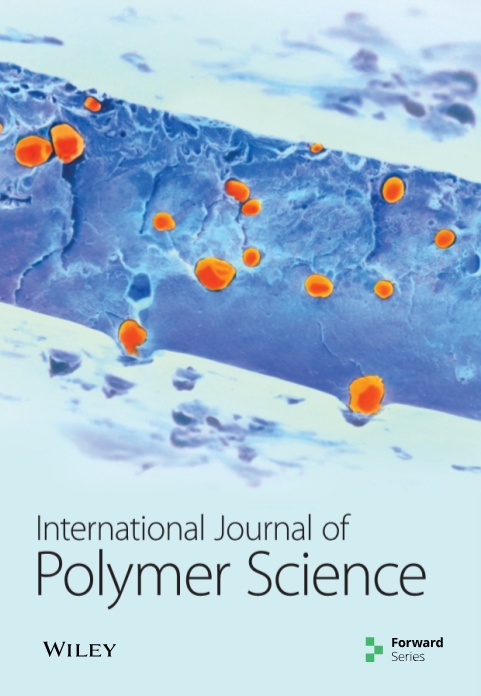Synthesis and Properties of a New Type of Terpyridine Cholesterol Derivative Gelator with Applications to Medical Treatments
IF 4.4
4区 化学
Q2 POLYMER SCIENCE
引用次数: 2
Abstract
Low molecular mass gelators (LMMGs), as a new type of intelligent soft material, possess good response properties to light, electricity, heat, and ultrasound and have many potential applications in fields such as intelligent sensing, biological materials, and drug release. Additionally, steroid derivatives have been a focus in the study of LMMGs for their desirable properties as well, such as their rigid framework, multichiral center, and strong van der Waals accumulation. Furthermore, the coordination ability of terpyridine has been an emphasis in the study of supramolecular chemistry and coordination chemistry as well. Attempts have been made with terpyridine groups that have special responses, such as terpyridine with steroid derivatives, to build more specialized and functional gelators. In this study, we used 2-acetylpyridine, 2-formaldehyde, and cholesterol to synthesize 6-(2,2:6 ′ ,2 ″ -terpyridine-4 ′ -carboxamide group) hexanoic acid (with a yield of 64.39%, P1), glycine cholesterol ester (with a yield of 70.36%, P2), and DMTCP (with a yield of 88.92%). Infrared spectroscopy, nuclear magnetic resonance spectroscopy, mass spectrometry, elemental analysis, and gelator performance tests were then conducted to measure the gelation effect of the materials and to explore their gelation mechanisms. Compared to P1 and P2, the DMTCP synthesized by P1 and P2 was able to form gel in more kinds of solvents. In addition, when it contains both terpyridine and cholesterol functional groups, the gelation properties of DMTCP were also significantly improved, and all the gels prepared in the four solvents in which DMTCP can form gels were stimulus responsive.新型三联吡啶胆固醇衍生物凝胶剂的合成及性能研究
低分子量凝胶剂(LMMGs)作为一种新型的智能软材料,具有良好的光、电、热、超声响应性能,在智能传感、生物材料、药物释放等领域具有许多潜在应用。此外,类固醇衍生物也因其理想的性质,如其刚性骨架、多手性中心和强范德华积累而成为LMMG研究的焦点。此外,联吡啶的配位能力一直是超分子化学和配位化学研究的重点。已经对具有特殊反应的联吡啶基团进行了尝试,例如具有类固醇衍生物的联吡啶,以构建更专业和功能性的凝胶剂。在本研究中,我们使用2-乙酰基吡啶、2-甲醛和胆固醇合成了6-(2,2:6′,2〃-联吡啶-4′-甲酰胺基)己酸(产率64.39%,P1)、甘氨酸胆固醇酯(产率70.36%,P2)和DMTCP(产率88.92%)。红外光谱、核磁共振光谱、质谱,然后进行元素分析和凝胶剂性能测试以测量材料的凝胶化效果并探索其凝胶化机制。与P1和P2相比,P1和P2合成的DMTCP能够在更多种类的溶剂中形成凝胶。此外,当它同时含有联吡啶和胆固醇官能团时,DMTCP的凝胶化性能也得到了显著改善,并且在DMTCP可以形成凝胶的四种溶剂中制备的所有凝胶都具有刺激响应性。
本文章由计算机程序翻译,如有差异,请以英文原文为准。
求助全文
约1分钟内获得全文
求助全文
来源期刊

International Journal of Polymer Science
POLYMER SCIENCE-
CiteScore
6.10
自引率
0.00%
发文量
55
审稿时长
>12 weeks
期刊介绍:
The International Journal of Polymer Science is a peer-reviewed, Open Access journal that publishes original research articles as well as review articles on the chemistry and physics of macromolecules.
文献相关原料
公司名称
产品信息
百灵威
cholesterol
|
99%
 求助内容:
求助内容: 应助结果提醒方式:
应助结果提醒方式:


